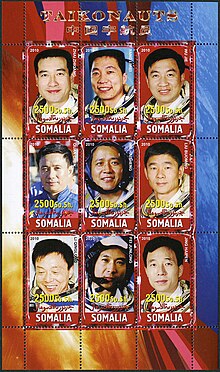
Yang Liwei is a Chinese major general, former military pilot, and former taikonaut at the People's Liberation Army.
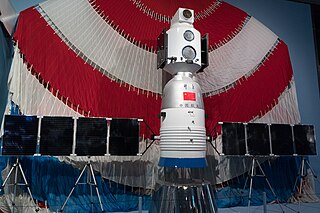
Shenzhou 5 was the first human spaceflight mission of the Chinese space program, launched on 15 October 2003. The Shenzhou spacecraft was launched on a Long March 2F launch vehicle. There had been four previous flights of uncrewed Shenzhou missions since 1999. China became the third country in the world to have independent human spaceflight capability after the Soviet Union and the United States.
As of 2024, the People's Republic of China has sent two women to space: Liu Yang and Wang Yaping, both taikonauts in the People's Liberation Army Astronaut Corps (PLAAC). Liu Yang, China's first female taikonaut, first flew in 2012 aboard Shenzhou 9, and since then three additional missions have included female crew members: Shenzhou 10, 13, and 14. According to the China National Space Administration, many women also hold leadership positions in the Chinese space program, and actively contribute to the Chinese space effort.

Liu Boming is a major general in the Chinese People's Liberation Army Strategic Support Force (PLASSF). A fighter pilot in the PLA Air Force (PLAAF), he was selected into the PLA Astronaut Corps (PLAAC) in 1998. A Shenzhou 7 veteran, he also worked on the Tiangong space station during the Shenzhou 12 mission from June to September 2021.
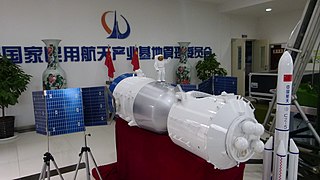
Shenzhou 7 was the third human spaceflight mission of the Chinese space program. The mission, which included the first Chinese extra-vehicular activity (EVA) carried out by crew members Zhai Zhigang and Liu Boming, marked the commencement of the second phase of the Chinese government's Project 921.

Zhai Zhigang is a Chinese major general of the People's Liberation Army Strategic Support Force (PLASSF) in active service as a People's Liberation Army Astronaut Corps (PLAAC) taikonaut. During the Shenzhou 7 mission in 2008, he became the first Chinese citizen to carry out a spacewalk. He was a People's Liberation Army Air Force (PLAAF) fighter pilot.

Nie Haisheng is a major general of the Chinese People's Liberation Army Strategic Support Force (PLASSF) in active service as an taikonaut and the third commander of the PLA Astronaut Corps (PLAAC). He was a PLA Air Force fighter pilot and director of navigation.
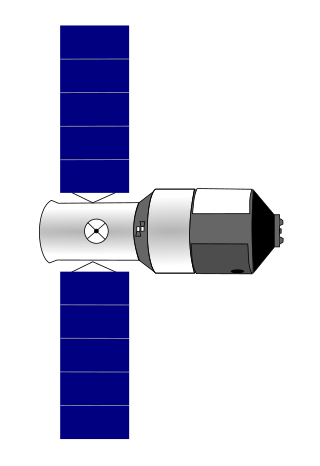
The Tiangong program is China's space program to create a modular space station, comparable to Mir. This program is independent and unconnected to any other international space-active countries. The program is part of the China Manned Space Program that began in 1992. The core module of the Tiangong space station, the Tianhe was finally launched on 29 April 2021 marking the start of the Tiangong Space program deployment.

Tiangong, officially the Tiangong space station, is a permanently crewed space station constructed by China and operated by China Manned Space Agency. Tiangong is a modular design, with modules docked together while in low Earth orbit, between 340 and 450 km above the surface. It is China's first long-term space station, part of the Tiangong program and the core of the "Third Step" of the China Manned Space Program; it has a pressurised volume of 340 m3, slightly over one third the size of the International Space Station. The space station aims to provide opportunities for space-based experiments and a platform for building capacity for scientific and technological innovation.

Shenzhou 9 was the fourth crewed spacecraft flight of China's Shenzhou program, launched at 18:37:24 CST, 16 June 2012. Shenzhou 9 was the second spacecraft and first crewed mission and expedition to dock with the Tiangong-1 space station, which took place on 18 June. The Shenzhou 9 spacecraft landed at 10:01:16 CST on 29 June in the Inner Mongolia Autonomous Region. The mission's crew included the first Chinese female astronaut, Liu Yang. The next mission was Shenzhou 10, which launched on 11 June 2013.

Shenzhou 10 was a crewed spaceflight of China's Shenzhou program that was launched on 11 June 2013. It was China's fifth crewed space mission. The mission had a crew of three astronauts: Nie Haisheng, who was mission commander and previously flew on Shenzhou 6; Zhang Xiaoguang, a former PLAAF squadron commander who conducted the rendezvous and docking; and Wang Yaping, the second Chinese female astronaut. The Shenzhou spacecraft docked with the Tiangong-1 trial space laboratory module on 13 June, and the astronauts performed physical, technological, and scientific experiments while on board. Shenzhou 10 was the 2nd and final expedition and mission to Tiangong-1 in this portion of the Tiangong program. On 26 June 2013, after a series of successful docking tests, Shenzhou 10 returned to Earth.

The China Manned Space Program, also known as Project 921 is a space program developed by the People's Republic of China and run by the China Manned Space Agency (CMSA) under the Equipment Development Department of the Central Military Commission, designed to develop and enhance human spaceflight capabilities for China. It was approved on 21 September 1992 and has been in operation ever since. The CMS commander and director are currently Xu Xueqiang and Zhou Jianping respectively; the latter has held this position since 2006, after taking over from Wang Yongzhi, who served as the first director from 1992 to 2006.

Wang Yaping is a Chinese military transport pilot and taikonaut. Wang was the second female taikonaut selected to the People's Liberation Army Astronaut Corps, the second Chinese woman in space, and the first Chinese woman to perform a spacewalk.
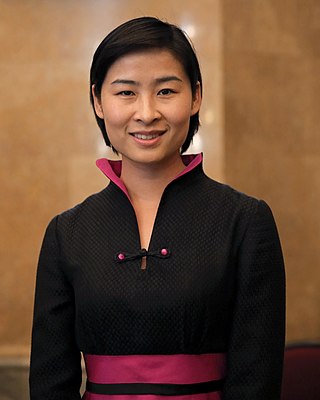
Liu Yang is a Chinese military transport pilot and taikonaut. On 16 June 2012, Yang became the first Chinese woman in space, as a crew member of Shenzhou 9.

Chen Dong is a Chinese fighter pilot and taikonaut selected as part of the Shenzhou program. A fighter pilot in the People's Liberation Army Air Force, he was selected to be a CNSA taikonaut in 2010.
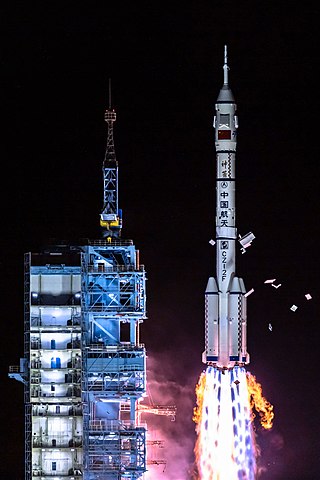
Shenzhou 13 was a Chinese spaceflight to the Tiangong space station, launched on 15 October 2021. It carried three People's Liberation Army Astronaut Corps (PLAAC) taikonauts on board a Shenzhou spacecraft. The mission was the eighth crewed Chinese spaceflight and the thirteenth flight overall of the Shenzhou program.

The People's Liberation Army Astronaut Corps, also known as the Chinese Astronaut Corps, is a Beijing-based sub-corps-level People's Liberation Army Strategic Support Force (PLASSF) unit directly under the PLASSF Space Systems Department (PLASSF-SSD) and is responsible for the selection and training of astronaut corps for Project 921, the Chinese manned space program.
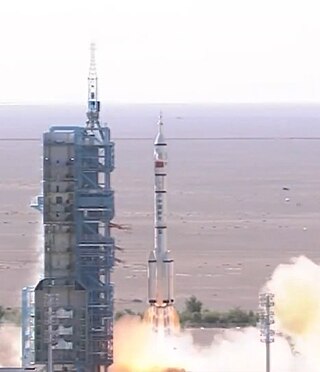
Shenzhou 12 was a Chinese spaceflight to the Tiangong space station, launched on 17 June 2021. It carried three People's Liberation Army Astronaut Corps (PLAAC) taikonauts on board a Shenzhou spacecraft. The mission was the seventh crewed Chinese spaceflight and the twelfth flight overall of the Shenzhou program. It was the first flight to Tiangong, and the first Chinese crewed spaceflight since Shenzhou 11 in 2016.

Senior Colonel Tang Hongbo is a Chinese fighter pilot and People's Liberation Army Astronaut Corps (PLAAC) taikonaut. He flew on his first spaceflight to the Tiangong space station as a part of the Shenzhou 12 mission, the first to visit the station. He is the commander of the Shenzhou 17 mission, making him the first taikonaut to visit Tiangong twice.
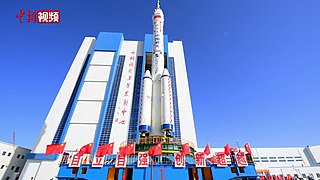
Shenzhou 14 was a Chinese spaceflight to the Tiangong space station, launched on 5 June 2022. It carried three People's Liberation Army Astronaut Corps (PLAAC) taikonauts on board a Shenzhou spacecraft. The mission was the ninth crewed Chinese spaceflight and the fourteenth flight overall of the Shenzhou program.
